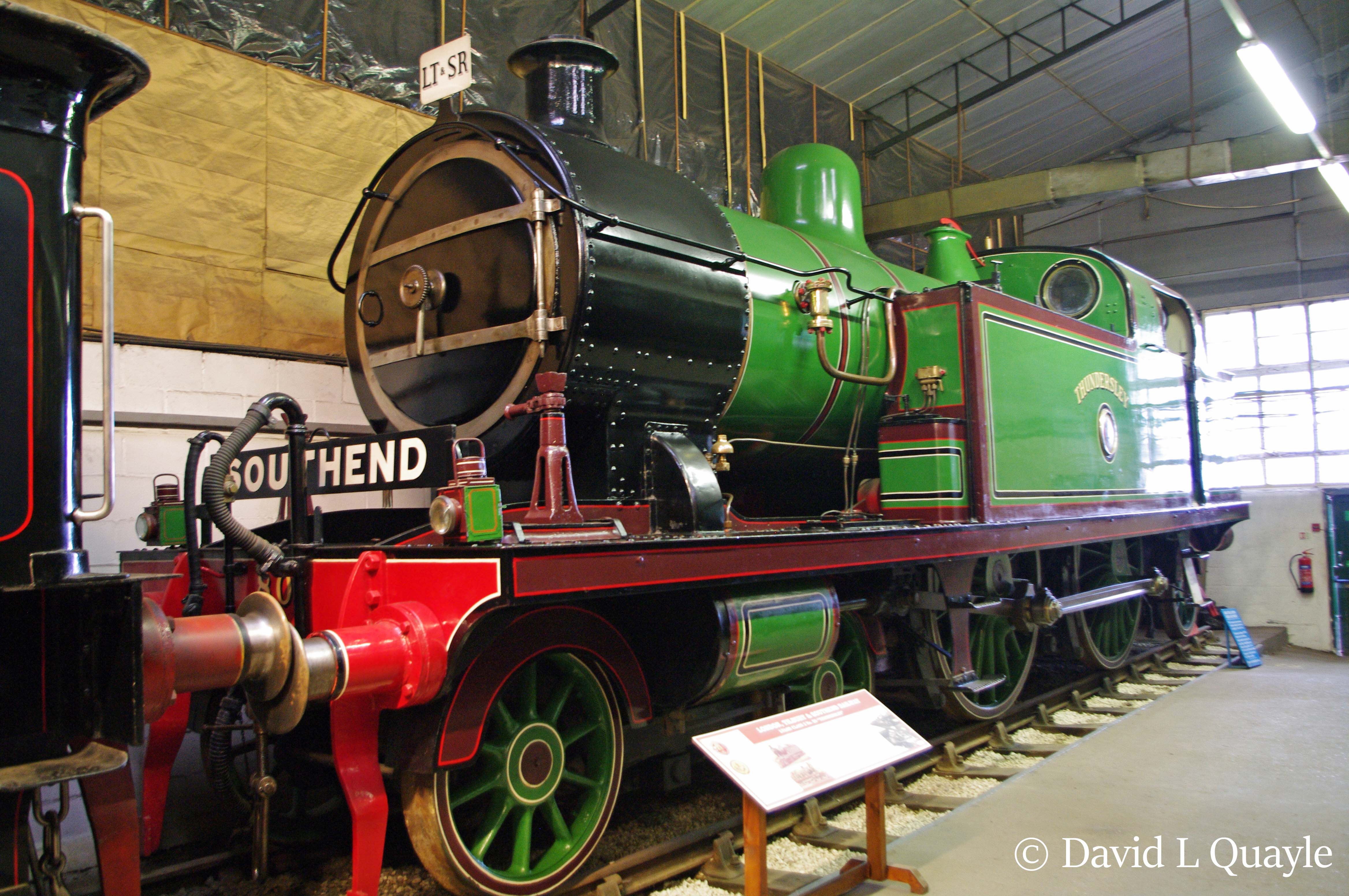
80 was built in 1909 at Robert Stephenson and Company at Darlington and was delivered direct to the Imperial International Exhibition at Shepherd’s Bush for which it was adorned in a special lavender livery and temporarily named Southend-on-Sea. It was built to haul the heavier commuter passenger trains on the London, Tilbury and Southend Railway.
Subsequently it carried the name Thundersley which is a district in the north of the Castle Point Borough, in southeast Essex.
New boilers for this class were built at Crewe as late as 1948, and one was fitted to No.80 in January 1949, after which it almost immediately entered storage, at Wellingborough, until February 1950 when it was transferred to Shoesburyness where it was based until 1953 when it moved to Toton. Other engines of the class ended their days there as shunters until 1960, despite their great unsuitability.
It was withdrawn from service in 1956 having completed 1,382,282 miles whilst in service. Although some LMS built engines survived in service until 1960 Thundersley was the last LTSR engine to be withdrawn.
Following transfer to the Eastern Region in March 1956 80 was restored, although the shade of green applied was not strictly correct. The restoration was undertaken by the Norwich shedmaster (Bill Harvey) with the assistance of members of the Norfolk Railway Society.
A glaring anomaly is the extended smokebox applied in early 1920s, and the subsequent Stanier chimney, which made London, Tilbury and Southend Railway period pretensions invalid.
It steamed at Bressingham between 1968 and 1972.
80 Thundersley is part of the National Collection is on static display at Bressingham Steam Museum in Norfolk.
| Home Base | Current Status | Owner |
| On loan to Bressingham Steam Museum | Static display | National Railway Museum
NRM Object Number{1978-7028} |



